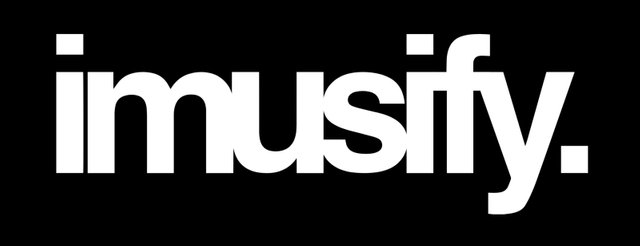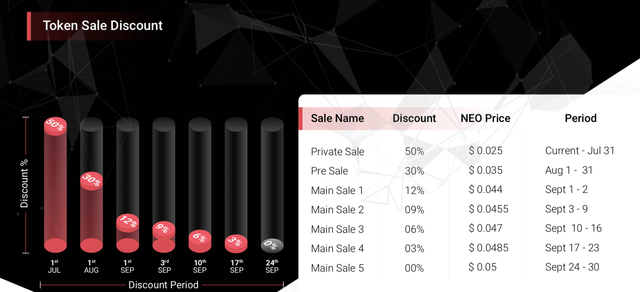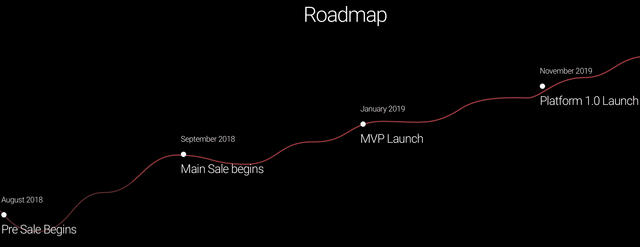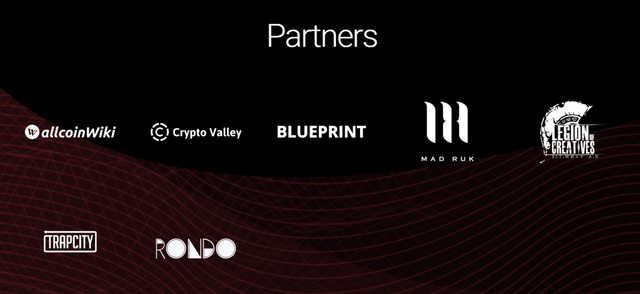IMUSIFY Decentralized Platform For Music Lovers
Introduction to Imusify
In today’s music industry, money speaks louder than ever. The rapid digitalization of music has led to a wide range of avenues for monetizing content. The problem however, is that the music industry was built as a centralized system for physical distribution. This was more practical in the 1970s when there was no internet and record labels were distributing actual records. This centralized system was not designed for today’s digital world and its outdated structure creates multiple inefficiencies in the music value chain.
Fortunately, we now have the technology to begin to decentralize the music industry, providing adding value to artists, consumers and other industry players. imusify is one of the pioneers of music’s decentralization movement. Other blockchain music projects also show leadership in tackling certain inefficiencies such as event booking and copyright management. However, what sets imusify apart is that it aims to serve different stakeholders and players across the entire music value chain, including crowdsourcing, collaboration, production, distribution, promotion, curation, live events and more.
While existing blockchain music projects address some current pitfalls of the music industry, imusify is designed for the future. We are building a scalable and adaptable technology framework for artists, music lovers, entrepreneurs and developers to use our platform to connect with the imusify community, create collaborative content and build new use cases.
While blockchain poses myriad opportunities to increase quality of life for virtually anyone in one way or another, operating as a decentralized organization presents inherent risk. With the birth of cryptocurrencies and exchanges, the barrier for investment decreased dramatically. The subsequent flood of currencies and initial coin offerings (ICOs) entering the market has led to several economic boom and bust episodes.
A boom and bust episode occurs when a company experiences a significant rise and fall in asset prices that do not directly relate to the firm’s value or period. With blockchain still in its infancy, very few currencies are mature enough to be traded based on their use case’s delivery of value or return of profits. Although a cryptocurrency exchange exists similarly to a stock exchange, until now cryptocurrencies have been traded solely on speculative basis, with little consideration for the actual value or potential profitability of the company.
imusify considers it a responsibility to present a cohesive document that allows us to escape the “whitepaper era” of blockchain and currency trading and into the era of real use and real value. While most whitepapers do not discuss the greater context of the blockchain economy, this analysis can be valuable to our readers by clarifying the inevitable uncertainty of an innovative venture like imusify, and by providing the necessary information for stakeholders and early adopters to make informed decisions.
Understanding Technology as a Character in Narratives
Narratives play an important role in defining our social reality. Social reality entails the collective beliefs and opinions of a group that result from interactions between individuals of the group. Existing in various forms, a narrative contains some form of plot that organizes certain characters and events, allowing the audience to come to
a certain conclusion about the events and characters within the given narrative. According to French philosopher Paul Ricoeur’s well-known Narrative Theory, narratives can configure our social reality because narratives configure narrative plots that refigure social events and thereby refigure our social reality. From this perspective, we can begin to understand how narratives play a mediating role in
configuring individual understanding and therefore defining a collective social reality. When humans interact with certain technologies, that interaction plays a role in an individuals understanding of the narrative. For example, the presence of a technology
such as an automobile shapes our understanding of how we travel from place to place.
The car in this example plays a role in defining our experience. The concept of the traditional narrative in text language can thus be extended to include technology as part of the narrative, a non-human character that leaves the reader (or interactor) with a different understanding of a certain reality after engaging with it. The car, using the previous example, can be defined as a fixed technological character, because it is a tool that plays the same role for various people within various narratives. We can also perceive blockchain as a technological character within a narrative.
However, blockchain technology differentiates itself from most previous technological innovations (with the exception of the internet and a few others) because it can exist as a fluid, rather than fixed character. We can not say that like a car, blockchain technology will take us from A to B, however, blockchain can uniquely serve manydiverse roles for groups of human and non-human actors of different narratives.
For example, imusify will use blockchain to serve as an interface and means of exchange between various narratives in the music industry. Other blockchain products use blockchain’s potential as a fluid character within a narrative to align beliefs around enhancements to various other social realities, industries and governance sectors.
With this in mind, we must begin viewing blockchain as not simply a piece of
technology that shapes a single aspect of human experience, but rather as an
important tool in defining the greater social reality that will emerge from human engagement with such technologies. Given the potential of fluid technological characters to shape human experiences, it is
the moral responsibility of blockchain projects and use cases to engage in narratives that imagine a more favorable reality for their users. In imusify’s case, we imagine a world of music that is not limited by barriers to entry, geographic or cultural boundaries, or intermediary parties that strip control from artists and entrepreneurs in the space. This paper attempts to begin a narrative into how imusify will use blockchain as a fluid narrative technology to positively impact the future of music, both as an industry and a global voice. imusify’s narrative begins in this paper, but its
story will continue to grow through the evolution of the imusify platform and within the ecosystem that emerges alongside it.
Fluid Technological Characters
At its core, a blockchain is a set of programmable protocols and strings of data that relate to a growing chain of digital transaction such records1. Records are encrypted and stored on “blocks” of data across all network storage nodes, each confirming a set of transactions. However, as previously discussed, blockchain exists as a fluid narrativetechnology, where this set of protocols has a more significant human dimension than just acting as characters on a screen.
Today, the most popular blockchain use case is the smart contract. In an effort to better understand blockchain’s value as a narrative technology, we will take a brief look into what a smart contract really is. Smart contracts control interactions on a blockchain by enforcing rules of interaction between parties. When engaging with a smart contract, an individual agrees to the function declaration of that contract. A function declaration simply defines a particular action that can occur within a set of parameterized. For example, when an imusify user purchases a song, they are agreeing with the
function to exchange a certain amount of cryptocurrency in exchange for a digital asset in the form of a song. Even in this basic example, the presence of a smart contract eliminates the need for a human intermediary or “verifier” of the transaction.
This smart contract therefore creates a new digital reality between users and artists where they can directly engage in a trustful fashion using smartcontracts as mediators between such engagements. When we build networks of smart contracts, we can imagine that this very simple
mediation role can be extended to facilitate trustful interactions between diverse types of users. With a network of smart contracts, there must be an overlapping presence of shared human desires and beliefs between individuals. Simply put, in order for a system of smart contracts to exist and function properly, the people who
use the system must share the same beliefs about what the system will create and accomplish. In the case of imusify’s digital reality, all human actors share a collective intention around giving more to artists for the value they provide, and creating a deeper means for connection and collaboration amongst all imusify participants. imusify presents several features and functionalities that help users realize their
intentions, from direct consumer-to-creator transactions, artist crowdfunding
campaigns, and content licensing protocols. In addition to the features imusify provides to its community, the open-source platform allows users to build new use cases that deliver value and build connections using imusify’s smart contract system.
From this perspective, we can begin to see how smart contracts are the defining characteristic that classify blockchain as a fluid technological character within a narrative. Let us now look at how the global music industry as it exists today, and examine the key inefficiencies that imusify will address with its smart contract based music ecosystem.
The centralized nature of industry creates three main challenges for artists: digital rights management, transparency of payments and licensing and monetization. These main problem areas are discussed in detail below:
1. Human Rights Management
The lack of a comprehensive rights management regime created several problems for managing the digital rights of artists from lost income to wrongful ownership. As now every right holder receives their share by registering with a community that has the duty to collect and share collected funds called royalties among all holders of rights based on agreements, partially determined by right holders but also often determined by the collecting community. Even if artists can now produce, distribute and market their work almost entirely digitally they still have little control over ownership and security of rights.
2. Payment Transparency
Payment transparency issues arise from centralizing the distribution of royalty systems. Performance rights organizations carry out the process by collecting payment royalties from streaming services and then allocating payments to artists based on royalty rates set by the organization such as The Copyright Royalty Board. There are also other transactional processes where holders the right to try to collect payments.
3. Licenses and Monetization
Outdated legislation around licensing systems and tariff setting failed to use technology to track licenses and send royalties. Digital music services have no efficient system in place to get and track all licenses related to various types of digital consumption such as radio, streaming on demand, streaming radio, digital purchases and more. Smaller artists don't have the resources to impose control over their content and rights. With limited information about how payments related to their content really don't work, they are often left out or not considered at all.
The solutions offered by Imusify by using the potential of blockchain usage, imusify uses blockchain to overcome industry challenges and provide real-world use cases that will not only bring value directly to the music room, but also educate early users to lead the evolution towards community adoption of blockchain use cases others.And can solve all the problems of transparency, data accuracy and financial problems.
Token details
Token Specifications: Token
Name: IMU
Platform Token: NEO
ICO Price: 1 IMU = 0.05 USD
Total Supply Tokens: 1,000,000,000 IMU
Softcap: $ 1,000,000
Hardcap: $ 25,000,000
Receive Payments: NEO, BTC, ETH, LTC, XMR, BCH and DASH
Tokens for sale : 65,000,000 IMU
Sales Bonuses
Team
Roadmap
Conclusion
imusify is an award-winning music platform that is reinventing the global music industry in order to liberate music makers, music fans, and music entrepreneurs. Let imusify help you find your creative voice, build a loyal following, discover great music, and reward your contribution. IMU tokens are used as the engine to support imusify’s multi-layered, decentralized music economy. This will create an immense potential value for the token’s use throughout imusify’s infiltration into the industry. Through our smart reward and compensation system, IMU is either rewarded for contribution to the platform, or used as a currency for exchanging digital assets and services. By establishing trust and transparency between artists, supporters, fans, and industry service providers; a vibrant ecosystem emerges.
Following more information;
Website: https://imusify.com
Whitepaper: https://imusify.com/whitepaper.pdf
Telegram Group: https://t.me/imusifycommunity
Twitter: https://twitter.com/imusify?lang=en
Facebook: https://www.facebook.com/imusify/
ANN: https://bitcointalk.org/index.php?topic=4327428.0
Bounty: https://bitcointalk.org/index.php?topic=4805108
Keep Tabs On Me Daily articles on cryptocurrency and blockchain based projects.
Steemit || BitcoinTalk profiles




